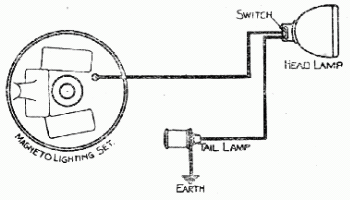

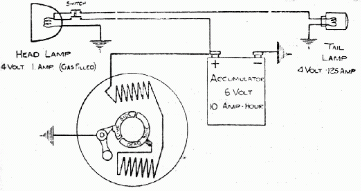
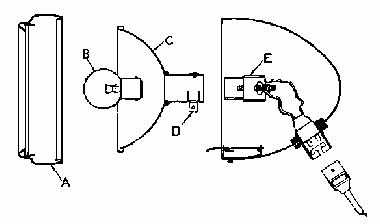
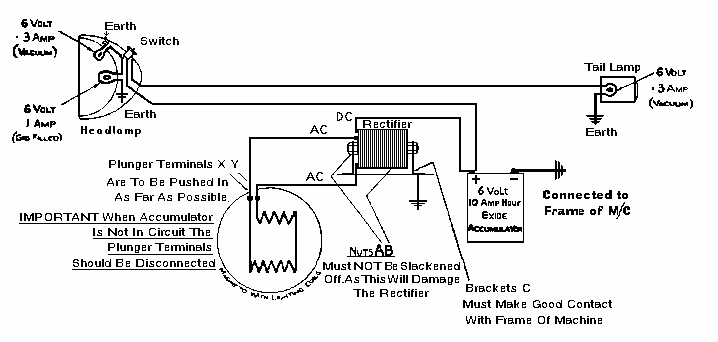
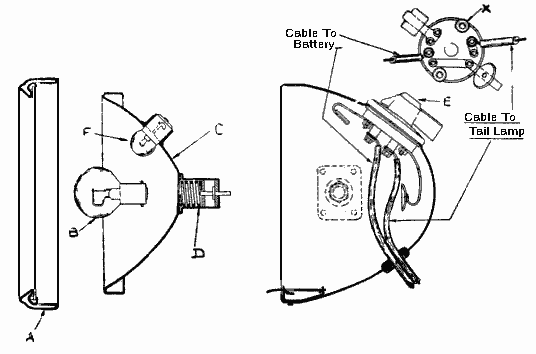
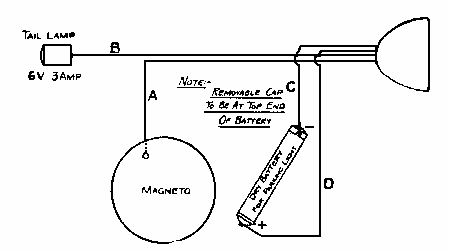
 |  | |
| Diagram of Switch Connections inside Head Lamp of 7-in. Set. | Diagrams of Switch Connections inside Head Lamp, 5-in. (or Midget) Set. |
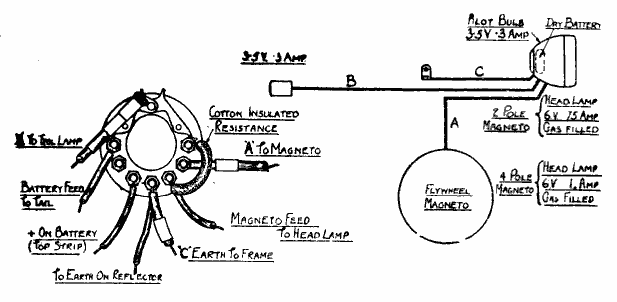
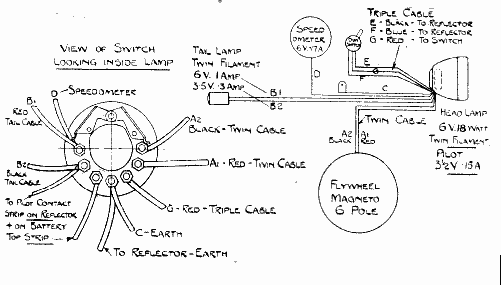
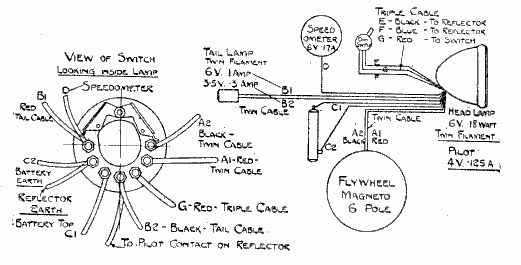
(b) Use Patent Castrol XL Oil, which gives good results on all Villiers engines.
(c) Open the handlebar lever of the carburetter about one-quarter way, and set the jet control lever as far as possible towards "rich." Depress the small plunger on the top of the carburetter float chamber until the petrol just commences to overflow. There is no need to allow any petrol to run to waste.
(d) Lift the compression release valve, and standing astride the machine, depress the kick-starter pedal once or twice and then give a sharp kick downwards, dropping the release valve lever just before the end of its stroke.
(e) When starting up, it is advisable on engines provided with variable ignition, always to retard the magneto to prevent the first explosion tending to drive the engine round backwards. The magneto is retarded by moving the control rod forward towards the cylinder, and is advanced in the opposite direction.
Manufacturers :
THE VILLIERS ENGINEERING Co. Ltd.
WOLVERHAMPTON . . ENGLAND